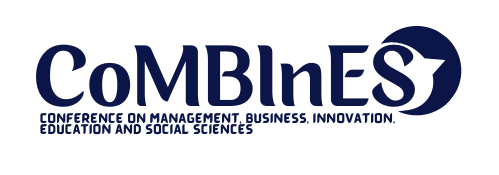Three-Dımensıonal Anımatıon-Based Rubık's Cube Algorıthm Tutorıal Vıdeo Wıth Mdlc Method
Keywords:
Rubik’s cube, Three dimentional animation, MDLC, Study, Rubik’s cube interestAbstract
Society often identify rubik’s cube as a “game for smart people” because it seems too complex and the needing to remember the algorithm just like remembering math equations so people don’t want to try playing rubik’s cube. To attract someone’s interest in learning rubik’s algorithm, we need a media that is easy to understand and easy steps to follow by showing both visual and audio. Tutorial video of rubik’s algorithm based in three dimentional character can portrait the real scrambled cube and every algorithm is shown so everyone that watch the video can follow it easily and also sharpen thinking skill. Tutorial video of rubik’s algorithm based in three dimentional character is made by using MDLC method that stands for Multimedia Development Cycle that consist of 6 elemens which is concept, design, material collecting, assembly, testing, and distribution. There are several independent variables that can affect students in showing interest in studying which is : Performance Expectancy, Effort Expectancy, Social Influence, Facilitating Conditions, Learning Value, and Hedonic Motivation also students interest that will be marked as dependent variable that will be refered as Behavior Intention. Based on the analitic result, independent variables that affects positively to dependent variable are Performance Expectancy, Effort Expectancy, Social Influence, meanwhile Facilitating Conditions, Learning Value, and Hedonic Motivation affects negatively to Behavior Intention.
Downloads
References
Agung, H., Jessica, J., & Januar, R. (2019). Implementasi Algoritma Kociemba pada Rekomendasi Penyelesaian Langkah Permainan Rubik. Jurnal Sistem Dan Teknologi Informasi (JUSTIN), 7(3), 139. https://doi.org/10.26418/justin.v7i3.30197
Amalia Yunia Rahmawati. (2020). 済無No Title No Title No Title. July, 1–23.
Anggelina, S., & Trisnadoli, A. (2020). Analisis Efektivitas Pesan Film Animasi 3D Bahaya Rokok terhadap Perokok Aktif Remaja dan Dewasa. ANDHARUPA: Jurnal Desain Komunikasi Visual & Multimedia, 6(1), 115–124. https://doi.org/10.33633/andharupa.v6i1.3209
Caesaria, C. A., Jannah, M., & Nasir, M. (2020). Pengembangan Video Pembelajaran Animasi 3D Berbasis Software Blender Pada Materi Medan Magnet. Southeast Asian Journal of Islamic Education, 3(1), 41–57. https://journal.iain-samarinda.ac.id/index.php/SAJIE/article/view/2918
Dajani, D., & Abu Hegleh, A. S. (2019). Behavior intention of animation usage among university students. Heliyon, 5(10), e02536. https://doi.org/10.1016/j.heliyon.2019.e02536
Gunawan, C. R., Ihsan, A., & Munawir, M. (2018). Optimasi Penyelesaian Permainan Rubik’s Cube Menggunakan Algoritma IDA* dan Brute Force. Jurnal Infomedia, 3(1), 37–42. https://doi.org/10.30811/jim.v3i1.627
Hidayah, T. N., Hasanah, U., & Indriani, L. (2020). Pengaruh Permainan Rubik Terhadap Perkembangan Otak Manusia. Prosiding Seminar Nasional Pendidikan Matematika (SNPM), 2(1), 485–490.
Jimmy, P., & Cristiansen. (2022). Perancangan Video Tutorial Teknik Trickshot Bola Basket Berbasis Animasi 3D. 10(1).
Novayani, W., & Eka Budiansyah, G. (2022). Implementasi MDLC dan Pose to Pose dalam Film Animasi 3D Sejarah Kerajaan Melayu Siak. Journal of Applied Informatics and Computing, 6(1), 98–103. https://doi.org/10.30871/jaic.v6i1.3367
Riyanto, R., & Susilawati, L. (2019). Penerapan Media Aurora Animasi 3D Maker Untuk Meningkatkan Hasil Belajar Kognitif Mahasiswa Biologi Ikip Budi Utomo Malang. Edubiotik : Jurnal Pendidikan, Biologi Dan Terapan, 4(01), 52–57. https://doi.org/10.33503/ebio.v4i01.438
Syahputra, B. (2022). Pengembangan Videografi Makanan di Pasar Malam Taiwan Berbasis Research and Development. Journal of Information System and Technology, 3(3), 28. https://doi.org/10.37253/joint.v3i3.7330





 LOGIN
LOGIN






